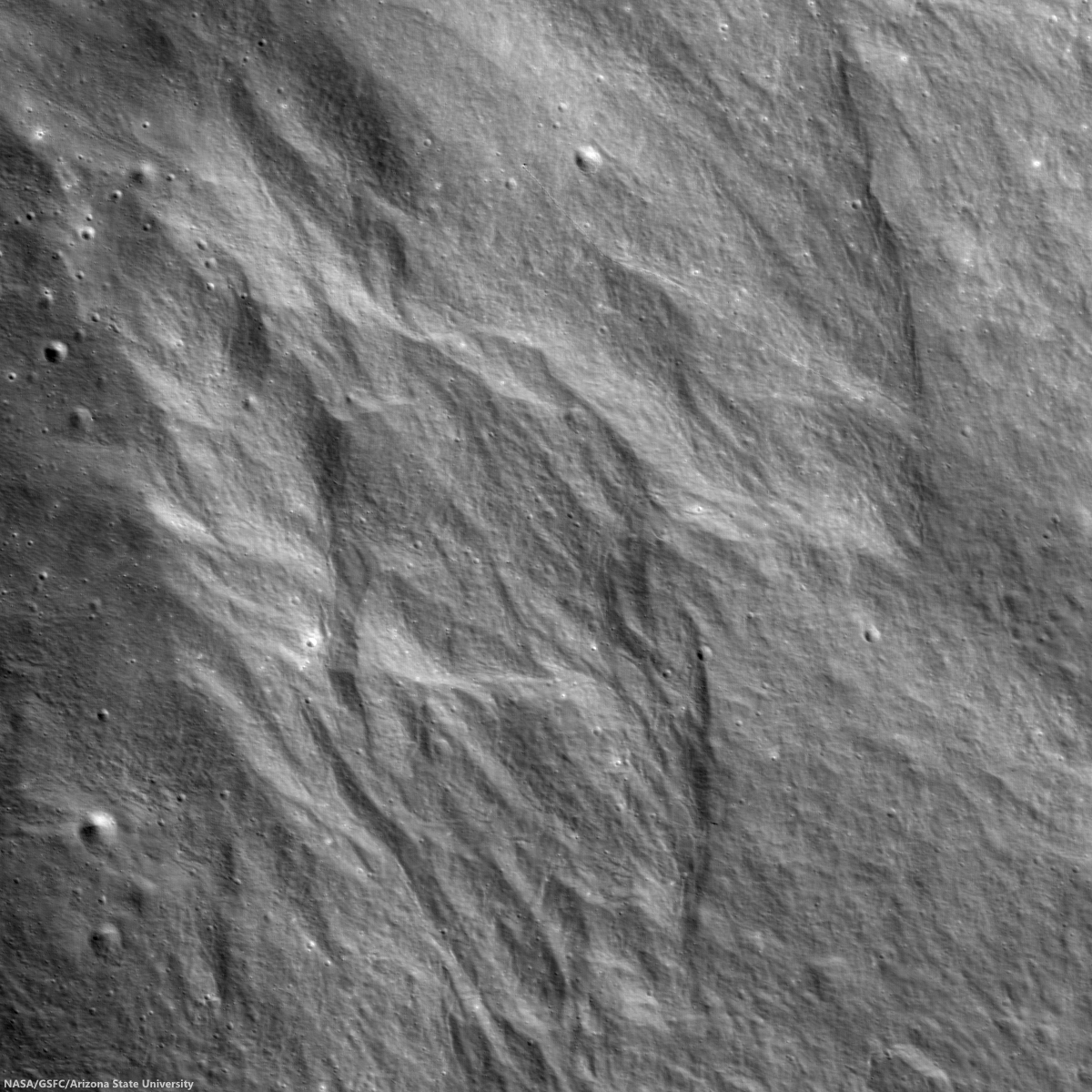 |
| Ejecta flowed down an unnamed crater wall leaving behind this spectacular pattern. LROC NAC M1145938700LR, LRO orbit 20904, February 2, 2014; 44.1° incidence angle, resolution 1.29 meters - 1800 meter field of view centered on 34.653°N, 187.234°E; width is 1800 m, downslope is to the lower-right, north is up [NASA/GSFC/Arizona State University]. |
Hiroyuki Sato
LROC News System
Today's Featured Image highlights the spectacular pattern left behind by ejecta rushing downslope across rough topography. As seen in next WAC context no-shadow mosaic, this area is extensively covered by fresh (high reflectance) ejecta from Moore F (~23.8 km in diameter), about 90 km northwest from the opening image. In fact the area around the image is peppered with Moore F secondaries, the beautiful terrain here may be ejecta from these secondaries.
The steep walls of this unnamed crater allow the ejecta material to travel further as a ground hugging flow, than if it had landed on a flat surface. At the distal edges of these ejecta deposits we see angular flow features (the opening image), likely formed by locally accelerated flow conditions (due to steep slopes). Unlike the flat and smooth mare surfaces, the slope-rich bumpy highlands create various flow conditions, which result in distinctive morphologies that help lunar scientists understand resurfacing processes on the Moon. Especially the importance of ground hugging flows.
HERE, and in LROC QuickMap, HERE.
Related Posts:
Delicate patterns in Giordano Bruno ejecta
Ground Hugging Ejecta
In the Wake of Giordano Bruno
Smooth Ejecta
LROC News System
Today's Featured Image highlights the spectacular pattern left behind by ejecta rushing downslope across rough topography. As seen in next WAC context no-shadow mosaic, this area is extensively covered by fresh (high reflectance) ejecta from Moore F (~23.8 km in diameter), about 90 km northwest from the opening image. In fact the area around the image is peppered with Moore F secondaries, the beautiful terrain here may be ejecta from these secondaries.
The steep walls of this unnamed crater allow the ejecta material to travel further as a ground hugging flow, than if it had landed on a flat surface. At the distal edges of these ejecta deposits we see angular flow features (the opening image), likely formed by locally accelerated flow conditions (due to steep slopes). Unlike the flat and smooth mare surfaces, the slope-rich bumpy highlands create various flow conditions, which result in distinctive morphologies that help lunar scientists understand resurfacing processes on the Moon. Especially the importance of ground hugging flows.
HERE, and in LROC QuickMap, HERE.
Related Posts:
Delicate patterns in Giordano Bruno ejecta
Ground Hugging Ejecta
In the Wake of Giordano Bruno
Smooth Ejecta



No comments:
Post a Comment